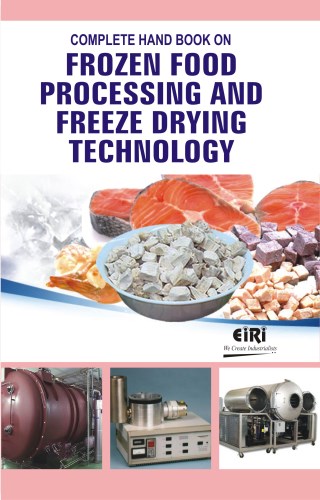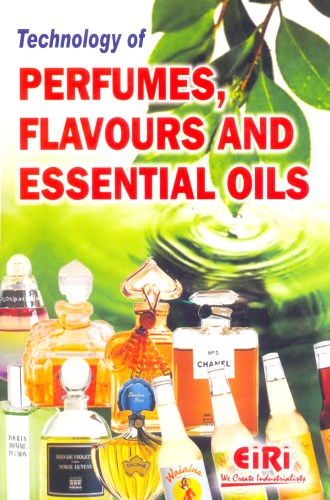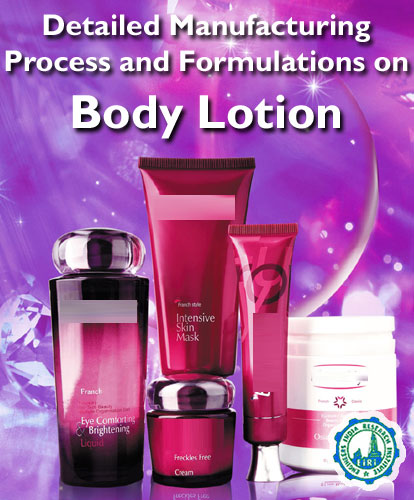Description
Chapter 1
FREEZING OF FRUITS & VEGETABLES
Quality And Safety of Frozen Fruits And Vegetables
Product influence
Process influence
Pre-freezing treatments
Safety
Traditional Freezing Technologies
Traditional preparatory treatments
Traditional freezing methods
Innovative Technologies
Innovative preparatory treatments
Innovative freezing methods
Chapter 2
PRESERVATION OF FRUITS AND VEGETABLES
Method 1
Method 2
Method 3
Method 4
Method 5
Method 6
Method 7
Method 8
Method 9
Method 10
Method 11
Method 12
Method 13
Chapter 3
FREEZING OF VEGETABLES
Method 1
Method 2
Method 3
Method 4
Comparative Method A
Comparative Method B
Chapter 4
FROZEN BLOCK PROCESS FOR VEGETABLE OR FRUIT CONVENIENCE FOODS
Chapter 5
METHOD FOR PRODUCING FROZEN VEGETABLE FOOD MATERIAL HAVING SOFT TEXTURE
Chapter 6
PREPARATION OF FROZEN FOOD (COOKED BURDOCKS)
Pretreatment of Burdocks
Heat-Treatment
Freezing Treatment
Preparation of Enzyme- Containing Dispersion
Enzyme-Impregnation Treatment
Treatment with Enzyme to Cause Enzyme Reaction
Enzyme-Deactivation Treatment
Freezing Treatment
Chapter 7
SEASONING INDIVIDUALLY QUICK FROZEN VEGETABLES
Chapter 8
FREEZING OF BAKERY AND DESSERT PRODUCTS
Bakery Products
Bake off technology and bakery products
Frozen dough
Process conditions
Formulation
Frozen part-baked bread
Introduction
Freezing of partially fermented dough
Conclusion
Frozen Desserts
Ingredients
Processes
Dynamic freezing
Structure and stability
Chapter 9
BANANA BASED FROZEN-NONDAIRY DESSERT
All banana
Strawberry-banana
Banana and pineapple
Banana and pecans
Banana and chocolate
Banana and peppermint
Strawberry-banana Banana
Banana
Banana and cocoa powder
Banana and walnuts
Banana and pecan and chocolate liquor
Banana and aniseed (Licorice)
Chapter 10
COATED FROZEN CHEESE GRANULES
Process
Emulsifier coating solution
Smoke flavor coating solution
Swiss flavor solution
Provolone flavoring of mossarella
Cheddar flavoring of mozzarella
Chapter 11
AERATED FROZEN DESSERT COMPOSITIONS
Protocol For Preparing Frozen Dessert Products
Preparation Of Yogurt Premix
Aerated Frozen Desserts
Composition of ingredients
Chapter 12
NON-FAT FROZEN DAIRY PRODUCT
Chapter 13
METHOD OF PREPARING A FROZEN DAIRY DESSERTS
Chapter 14
ICE CREAM MAKER
Chapter 15
METHOD OF MAKING FROZEN PATTIES
Chapter 16
METHOD FOR MAKING FROZEN DRINKS
Cup and Ingredients
Milkshake and Frozen Drink Machine
Blade
Operation
Microprocessor Control
Alternative Embodiment
Chapter 17
FROZEN DESSERT DISPENSING APPARATUS
Chapter 18
MISCELLANEOUS LAMINATED FROZEN FOOD PRODUCT
Refrigeration of evaporator
Lubricant System
Hydraulic Tracking System
Feeding The Liquid To Be Frozen
Chapter 19
FROZEN COMESTIBLES
Chapter 20
APPARATUS AND METHOD FOR DISPENSING FROZEN AQUARIUM FOOD
Chapter 21
FROZEN CAT FOOD
Chapter 22
HARD FROZEN FOOD CONTAINING ALCOHOL
Chapter 23
HIGH PROTEIN FROZEN FOOD PRODUCT
Method 1: Peach Flavor Frozen Product
Method 2: Strawberry Flavor Frozen Product
Method 3: Pina Colada Flavor Frozen Product Nutritional Values
Method 4: Banana Flavor Frozen Product
Chapter 24
MICROWAVE HEATING OF CERTAIN FROZEN FOODS
Chapter 25
FREEZE DRYING
The Food Material Science Of Freeze Drying
The glass transition
The use of state diagrams
Freezing
Freeze drying
Importance of the freezing step
Equipment and Operation
Introduction
Freeze drying
Laboratory-scale equipment
Industrial-scale equipment
Chapter 26
PROCESS AND APPARATUS FOR THAWING FROZEN FOOD
Chapter 27
FROZEN FOOD MASTICATING MACHINE
Chapter 28
APPARATUS FOR DEFREEZING FROZEN FOODS
Chapter 29
MACHINE FOR CUTTING FROZEN FOODS
Chapter 30
ELECTRICALLY HEATED FROZEN FOOD SERVER
Chapter 31
HOUSEHOLD APPLIANCE FOR MAKING FROZEN FOOD PRODUCTS
Structure of Appliance
Operation of Appliance
Chapter 32
FROZEN FOOD TRANSPORT
Transport and Storage
Modes of transport
The insulation
Air circulation
Refrigerating power
Energy storage
Multi-compartment vehicles
Thermal Loads
Ageing
Insulated containers
Refrigerating units
Comparison Between Fresh And Frozen Product Transport
Standards and Classification
systems of transport
Rail transport
Water transport
Intermodal transport
Energy Labelling
Limit Values
Global heat transfer coefficients
Safety coefficient
The Future Of Materials Used In Refrigerated Transport
Refrigeration system refrigerants






